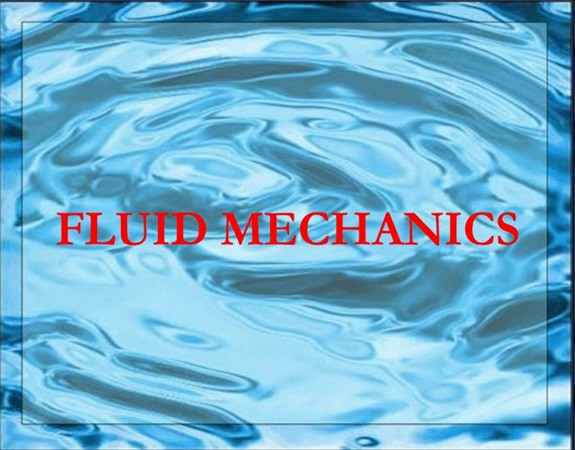
Fluid Mechanics is a branch of physics and engineering that focuses on the behavior of fluids (liquids, gases, and plasmas) and their interactions with solid boundaries. It is crucial in fields like civil, mechanical, aerospace, and chemical engineering. Here is a detailed overview of a typical Fluid Mechanics course:
1. Course Prerequisites
- Basic understanding of calculus and differential equations.
- Introductory physics, particularly mechanics.
- Knowledge of thermodynamics and material properties is helpful.
2. Course Objectives
- Understand the fundamental principles governing fluid behavior.
- Analyze fluid flow in various systems using theoretical and computational methods.
- Apply fluid mechanics principles to solve real-world engineering problems, such as fluid transport, aerodynamic design, and hydraulic systems.
3. Key Topics Covered
1. Introduction to Fluid Mechanics
- Definition of fluid, difference between solids, liquids, and gases.
- Continuum assumption and when it is applicable.
- Basic properties of fluids: density, viscosity, pressure, surface tension, compressibility.
2. Fluid Statics
- Hydrostatic pressure distribution.
- Pascal’s law and its applications.
- Manometry and measurement of pressure.
- Forces on submerged surfaces (plane and curved).
- Buoyancy and stability of floating bodies (Archimedes' principle).
3. Fluid Kinematics
- Description of fluid flow (Lagrangian and Eulerian approaches).
- Streamlines, pathlines, and streaklines.
- Types of flow: steady/unsteady, uniform/non-uniform, laminar/turbulent, compressible/incompressible.
- Flow visualization techniques.
4. Fluid Dynamics
- Derivation of the Continuity Equation (conservation of mass).
- Derivation and applications of the Bernoulli Equation.
- Momentum Equation and forces in fluid flow (control volume analysis).
- Energy equation and head loss in pipes.
- Navier-Stokes equations (without and with simplifications for various flow regimes).
5. Dimensional Analysis and Similitude
- Buckingham Pi theorem.
- Non-dimensional numbers: Reynolds number, Froude number, Mach number, Prandtl number, and others.
- Model testing and similarity principles.
6. Internal Flows
- Flow through pipes and channels.
- Laminar and turbulent flow in pipes.
- Moody chart and friction factor for different flow regimes.
- Minor losses due to pipe fittings and bends.
- Analysis of piping networks and flow measurements (Venturi meter, orifice meter, etc.).
7. External Flows
- Boundary layer theory and separation.
- Flow over bodies (cylinders, spheres, airfoils).
- Lift and drag forces.
- Streamlined and bluff bodies.
- Introduction to flow around wings and aerodynamic design.
8. Compressible Flow
- Basics of compressible flow and the speed of sound.
- Mach number and flow regimes (subsonic, transonic, supersonic).
- Isentropic flow relations.
- Shock waves and expansion waves.
- Applications in nozzles, diffusers, and supersonic flight.
9. Flow in Open Channels
- Flow classification in open channels (subcritical, critical, supercritical).
- Specific energy and critical depth.
- Hydraulic jumps and energy dissipation.
- Flow measurement techniques (e.g., weirs and flumes).
10. Computational Fluid Dynamics (CFD) (Optional/Advanced)
- Introduction to numerical methods for fluid mechanics.
- Discretization methods (finite difference, finite element, finite volume).
- Solution of Navier-Stokes equations using CFD software.
- Applications of CFD in engineering problems.
4. Course Structure
- Lecture Hours: 3-4 hours per week.
- Laboratory Sessions: Typically 2-3 hours per week, focusing on experiments like flow measurement, visualization of laminar/turbulent flow, and pressure measurement.
- Assignments: Problem sets on theoretical concepts and real-world fluid flow problems.
- Projects: Group or individual projects involving practical applications or simulations.
- Examinations: Mid-term, final exams, and quizzes to assess understanding.
5. Laboratory Experiments
- Measurement of fluid properties (density, viscosity).
- Flow visualization using dye or smoke.
- Flow through pipes and channels.
- Use of manometers and pressure sensors.
- Measurement of flow rates using Venturi meters, orifice plates, and rotameters.
- Boundary layer visualization and study.
6. Software and Tools
- MATLAB or Python: For numerical analysis and solving fluid dynamics equations.
- ANSYS Fluent, OpenFOAM, or other CFD software: For simulating fluid flows.
- Excel: For data analysis and graphing experimental results.
7. Reference Books
- Fluid Mechanics by Frank M. White.
- Introduction to Fluid Mechanics by Robert W. Fox, Alan T. McDonald, and Philip J. Pritchard.
- Fundamentals of Fluid Mechanics by Bruce R. Munson, Donald F. Young, and Theodore H. Okiishi.
- An Introduction to Computational Fluid Dynamics: The Finite Volume Method by H.K. Versteeg and W. Malalasekera.
8. Assessment and Grading
- Assignments: 20%
- Lab Work: 15%
- Mid-term Exam: 20%
- Project: 15%
- Final Exam: 30%
9. Applications of Fluid Mechanics
- Design and analysis of hydraulic systems (pumps, turbines).
- Aerodynamics in vehicles and aircraft design.
- HVAC systems and ventilation.
- Environmental engineering (river flow, pollution dispersion).
- Process engineering in the chemical industry.
- Medical applications like blood flow analysis.
This course forms a foundation for more advanced topics like Computational Fluid Dynamics (CFD), Turbomachinery, and Aerodynamics. It combines theory, practical knowledge, and computational tools, equipping students to solve complex fluid-related challenges in various industries.
